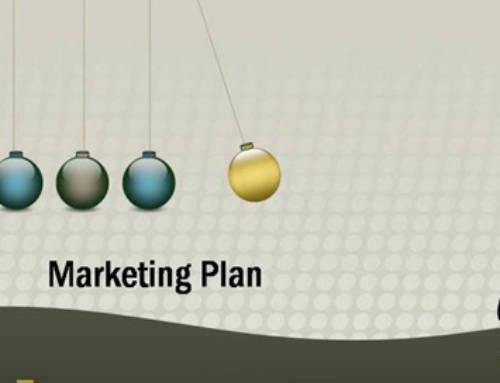365 Digital Marketing Tips – SEO, SEM, Social Media, WordPress and Analytics
SEO
Dominating search engine results pages is what SEO marketers and website owners dream of. Just keep in mind that ranking on the second or third page of search results does not mean that you are not interested in ranking or providing great online services. Competition is fierce. Here is a list of SEO techniques and ideas that can help drive online results.
1. Provide information and answers that are accurate and to-the-point by utilizing synonym ranking techniques.
2. Benchmark a competitor’s broken links on a website of interest. Notify the site owner and ask if you can replace them.
3. Use Adwords to peek over the fence and discover your competitor’s keywords. Get a fresh perspective on SERP performances.
4. Google Correlate shows words that tend to get searched for together. It’s an easy way to cover all your keyword bases.
5. Get your content in featured snippets. Add a short Q&A section to your content. It can help increase traffic.
6. Provide Web content that is actionable, relevant, and easy to access. Think of it as offering systematic information.
7. Seek to diversify the links pointing to your content. This indicates your desire to maintain a website natural profile.
8. The right YouTube descriptions can help you diversify your rankings. Video content can get lots of popularity.
9. Scope out the ‘evergreen’ content of competitors. Make every effort to create the most complete articles and content possible.
10. Write SEO content that addresses specific audiences. Specific sub-topics are the key and can help increase your ranking.
11. Never overlook Wikipedia as a great source for hidden keywords since the material appears in an information-centric way.
12. Discover keywords with Bing and YouTube Suggest. You should be able to find a host of long tail keywords.
13. Spread internal webpage authority through strategically placed internal links. Think in terms of deep links.
14. Have you ever thought about ranking for the not-so-popular keywords? Visit Google’s third page. This can lead to additional in-depth content.
15. Create an ‘expert roundup’ where influencer opinions can spark a higher reader response rate. The results can be impressive.
16. An increase in landing pages is worth the effort. Additional landing pages can increase viewership.
17. Do not overlook the power and effect of infographics with respect to SEO. They can provide more information and engagement.
18. Consider guest blogging on your own site that links externally. It will increase the shares and leads of your content.
19. Your photos are on the Internet. Ask websites to associate your photos with your brand. These are image credits.
20. If anyone mentions your brand on the Web, monitor it instantly and engage with those influencers. Use brand-monitoring tools.
21. Press releases are not as old-school as some digital marketers might think. Use them to enhance branding efforts.
22. You can also use press releases to your advantage to gain natural links. Just make sure to keep the topic on track.
23. Be aware that targeting one keyword per page is not an effective enterprise SEO approach.
24. A table of content can improve a user’s experience. Create a content strategy that addresses the informational structure of articles.
25. If you have any 404 pages, you can limit the bounce rate with a little sense of humor and creativity on the pages.
26. Use power-up words in title tags. People respond to words like amazing, little known facts, fast, and proven results.
27. Make sure when people click on your site, they have access to the information they are looking for. Deliver!
28. Delete every zombie page on a website. These are pages that have no meaningful life. It is all about the user experience.
29. Utilize ‘feeler emails’ for link building purposes. Reach out to site owners and let them know you have a useful content to share.
30. Add text to videos, podcasts, and infographics. Add quality content below the infographics and videos.
31. Why not give old content new life? There could be hundreds of blogs sitting on your site that are collecting dust. Write evergreen content.
32. You can possibly get backlinks from speaking gigs if you have expertise as a speaker. It works for both you and clients.
33. Get a site ready for mobile-first indexing. This is now a general Google recommendation.
34. The CrUX has data that you may be able to leverage. The dashboard offers information that speaks to the user experience.
35. Get your site set up on Google Business. If you own a brick-and-mortar store, it just makes good sense.
36. Consider Google News. News articles on Google News can get a lot of attention. It could be a wellspring of hidden traffic.
37. Search intent is an area where you want to apply a great deal of research. Know the reason behind every search.
38. Write content for humans and search engines. The content must be relevant and informative. Inspire readers to share.
39. Write content with your heart, and then come back and edit with your mind. Google knows the difference.
40. Grow your ability to analyze your search traffic. There is a wealth of information to gain.
41. There are always new changes concerning SEO. Stay up to date on Google algorithm rollouts as well.
42. Make improvements to your website’s page loading speed. Customers and Google’s algorithm are paying close attention.
43. Break up content with header tags that attract attention. It also helps readers to move down a page.
44. This might sound like too easy of a fix, but start blogging. Satisfy Google’s appetite for fresh content.
45. Blog to inform your visitor with the best content on the Web and become an expert in your field.
46. Not into blogging? Turn the task over to company employees or any trusted individual with information to share.
47. Design your website and write content in terms that will speak to your audience. These things matter.
48. It might be a challenge, but write high-quality content that trumps the competition. Authority and trust matter.
49. Delve into your website and fix broken links. Visitors hate broken links. So does Google’s algorithm.
50. There are numerous tools on the market for finding and fixing broken website links. Get familiar with them all.
51. Utilize those tools that can find broken links on other websites as well. Offer to write new content for those site owners.
52. Take the time to properly format Web pages. It is what other people see that counts. See through their eyes.
53. You can build and train an SEO army. SEO affects every role of company employees. Train people to win.
54. Expand knowledge of company competencies by placing this information in featured snippets.
55. Seek to learn more about schema and javascript. Make it easier for crawlers to interpret website content.
56. With respect to websites, make sure all subdomains and variations point correctly to the main site.
57. If a hosting service is slow, there is trouble up ahead. Go for fast and platform-specific hosting services.
58. A content management system is also critical for producing good SEO results. Choose the right CMS for business.
59. Keep checking and rechecking to make sure a site is crawlable and accessible.
60. Install effective XML sitemaps that aid search engine crawlers to navigate websites and to discover new pages.
61. Prepare SEO reports and strategies that align strictly with client goals. Explain how those goals impact the client’s business.
62. Form a clear hypothesis and show how your SEO efforts will meet targeted goals.
63. Outline procedures to show accomplished work that meets your goals along the way.
64. Optimize images for alt text regardless of what Google says or does with its algorithm. Do the right thing.
65. Always prioritize authoritative content. Think expertise, authority, and trustworthiness.
66. Short-form content offers the same ranking potential as long-form. Long-form can offers the best possible information.
67. Include AMP. There is a strong possibility that Google considers it as a ranking factor.
68. Target LSI keywords even though they may not impact ranking. They can help expand necessary and relative information.
69. Even though there is no technical need for HTTPS to get indexed by Google, it would not hurt to have an SSL certificate.
70. When selling SEO services, transparency is the big key to a good working relationship.
71. The one-size-fits-all approach to any SEO suite of services is never the right approach. Every business is unique.
72. Never make guarantees. Manage expectations in a very professional way. Go for realistic results.
73. Any marketer selling services should be able to show proof of success on their own site.
74. Explain a complete host of benefits for projects on the horizon. Be able to show examples.
75. Businesses, many, have a local presence. Marketers should always be aware of optimization processes.
76. Every competitor will have weaknesses and strengths. Be able to identify and pinpoint these.
77. Clients need to understand the timeline of how SEO works. SEO takes time to be effective.
78. Transparency can help customers and stakeholders make the right decision for implementing SEO techniques.
79. Match problems with solutions and take into consideration what the business or client wants and needs.
80. SEO marketers should provide both validating and educational information to clients and stakeholders.
81. Be very aware of what SEO will deliver. Offer charts, transparency, and reports where necessary. Make the case.
82. While SEO is important, the most important strategy for growth is about relationship building.
83. Price is not a major selling point for SEO services. Talk results and under-promise and over-deliver.
84. If you are a SEO marketer, listen. Connect with people you are trying to find solutions for.
85. Claim a thorough understanding of the SEO landscape. This helps clients tremendously and boosts confidence.
SEM
The SEM advertising landscape is in constant flux. Ad platforms will continually introduce new formats and tools. The goal is always to streamline campaign management activities and improve results. Consumers have high expectations, and continually look for and respond to ads that deliver cohesive messages while delivering an effective user experience. On the SEM marketer’s end, it is all about collecting and analyzing user data and applying it to their SEM campaigns. Long gone are the days that you can just set up things and forget about them.
86. SEM campaign automation can produce things like smart shopping campaigns, dynamic search ads, and responsive search ads.
87. Reevaluate your exact match. There could be Google changes that have a negative impact on your program.
88. Take your audience strategy to its next level. Know who shops with more detailed demographic data.
89. SEM manual reporting should be thing of the past. Automate your reporting output. Consider Google Data Studio for data refreshment.
90. Optimize spend between channels by utilizing information from one channel and applying the learning to others.
91. Go with SEM data and not your gut. Be totally aware of how a certain demographic is converting on your site.
92. Make sure your ad groups specifically target the desired demographic. You do not want women to land on men page, or vice versa.
93. There is such a thing called “unknown demographics” in SEM. Avoid excluding this group from your ad program.
94. Pay close attention to visual searches and design more visual ads if warranted. Give greater attention to aesthetics.
95. LinkedIn is in the game, and will compete with Google Ads. LinkedIn is a highly active business community. Take advantage.
96. Take advantage of Amazon. Its search engine has surpassed Google’s for analyzing products people show interest in.
97. Plan for the SEM game rules to change with ad blockers. For pay-per-click, this is more concerning than the competition.
98. The marketing winds are changing for PPC. The focus will shift from match types and terms to address people and context.
99. Google says search SEM ads should work for everyone. The growing trend for search engines is automation. Get on board.
100. Voice search is an emerging SEM emerging technology with respect to marketing. Now, 20% of mobile search is through voice search.
101. Make sure your content is interactive in that is requires some type of user participation. Inapire consumer feedback.
102. Video is great for gaining user attention. Providing live video can take it to the next step. This is a growing SEM trend.
103. You can leverage AI to target new audiences and niche demographics. Use it to drive customer segmentation.
104. While it is tempting to look for your Google ad, avoid repeated searches and escape a Google reprimand.
105. Define your SEM goal so that you can determine what success looks like. Measure progress with interim goals.
106. Define conversion accurately. This helps to define the cost of acquiring each new customer to your site.
107. Never fail to A/B test ad copy. Allow AdWords to control the frequency for ads that you want shown.
108. Apply an A/B test to each landing page as well. It is easy to overlook the simple things in SEM.
109. You can review your bids and the ratio of conversions to cost though your keyword selection.
110. The process of SEM never stops. Never be afraid to make changes even if you feel the need for additional data.
111. Another SEM strategy is to revisit and remarket a sales countdown to keep customers engaged.
112. Advertise to people with similar behaviors and increase the odds of conversation. Boost click-through rates.
113. AdWord “IF Functions” enables ad copy tailoring for those audiences that satisfy a particular condition.
114. Another good SEM approach is to mix and match customer parameters. Your ad can be either time or inventory sensitive.
115. You can improve SEM quality scores with consistent themes. High-quality ads often lead to lower pricing and better ad positioning.
116. Keep reminding yourself that the Internet never sleeps. People will find the products and services they need. Satisfy them.
117. Become an SEM expert at demographic targeting. Direct traffic to the appropriate landing pages.
118. Plan for multi-channel campaigns and multi-cross advertising. Large and small companies are onboard.
119. Keep setting aside time to reevaluate and revue your budget. Move funds from less successful campaigns to fuel successful ones.
120. PPC is in a constant state of flux. Get in the habit of seeking other perspectives and collaborate with friendly sources.
121. Experiment with new features like bid adjustments, promotion extensions, and outstreaming mobile video campaigns.
122. Experiment with new channels. Find out where people are spending their time on the Internet. Consider Quora.
123. Map conversion actions. Find the conversion actions that make sense for each stage of the funnel.
124. Keep thinking in terms of building your brand as a major objective. Implement a brand awareness PPC campaign.
125. Think coherent messaging especially for responsive search ads. Headlines and descriptions should work well together.
126. If you have not already, it is time to embrace custom mobile ads. More and more people are turning to mobile search.
127. Continue to protect your trademark property. How is your trademark used by others? Aim for a lower cost-per-click.
128. How about optimizing your business profiles? This can include a sharper bio, additional photos, and a smart call to action.
129. Believe it or not, the highest quality content and most relevant results do not always receive the highest ranking.
130. Take a deep dive into Google’s ranking algorithm factors. Google keeps it cryptic on purpose, but there are insights.
131. More frequent content publishing yields far more leads. However, stick to a publishing schedule.
132. Try to publish content at the same time of day and week. Your readers will look forward to each new published post.
133. Your Facebook Page SEM insights can reveal when users are most active. Address time zones and a and other revealing data.
134. Twitter posting should occur on a regular basis. Try seven days a week or every hour on the hour.
135. Post on Twitter within the first six hours of any given day for best results. Catch people when they are active.
Social Media
136. Start doing live streaming on your favorite social media channel. This allows for special interactions.
137. Messenger marketing is the new email marketing. Consider Facebool e where millions of people interact with.
138. Chatbox messaging is much the same. Connect with existing and future customers.
139. For social media, think of strategies to produce ephemeral content. Engage quickly with content that will disappear in 24 hours.
140. Stay in the customer’s mind with personalized social media messaging. It is a way to remain real and authentic.
141. AI allows you to leverage data from your platforms. It can also help you inspire conversions.
142. Videos are always a hot commodity in today’s world. You can stream live and takes everything to the next level.
143. Influence marketing for social media is a must to consider for social medial campaigns. Let key leaders drive your brand.
144. Go with visual search and upload images on your social media platforms. Allow your users to get more specific results.
145. Get more familiar with products like “Google Lens.” Users can snap photos and learn where to buy products online.
146. Online reviews can be totally effective. People pay attention to what others have to say about a product or service.
147. There are numerous paid and free social media analytics tools that you can use to gain insights into campaigns. Familiarize yourself.
148. A big social media trend gaining traction is telling stories and sharing special moments that matter.
149. We mentioned the effect that influencers can have. Make it a point to work with micro influences as well.
150. Put the “social” back into social media. People are getting tired of artificial attempts to keep them engaged.
151. Find ways to earn, rebuild, and keep the trust of your followers. Work with social media experts if necessary.
152. Consider LinkedIn for uploading videos. Some marketers report 10x the LinkedIn usage as compared to Facebook.
153. If you own a business, get your employees on the social media band wagon. Read up on what the successful companies do.
154. Run contests and deals in your marketing campaigns. Have followers tag others for a chance to win a prize.
155. What about providing that special offer or freebie? Use these as a special magnet to collect email addresses.
156. Imbed your personality into social media efforts. This complements your branding efforts as well.
157. Customer service keeps customers happy. Follow up on any complaints right away and offer a solution.
158. You can always create social media content in bulk so that it can upload on a regular schedule.
159. Figure out the best times to post during the day, and on days of the week for Integra. It can be 8-9 a.m. or 2-5 p.m.
160. Never preach on Instagram. Just tell your unique story. Inspire audiences through videos and images along with content.
161. Get familiar with Instagram’s video formats. From short to long-form videos, there is a format that fits.
162. Utilize the power of GIFs on Instagram. They get more viewership than JPEGs or PNGs.
163. Get smart and effective with your Instagram hashtags. This can mean the difference between a top or bottom appearance.
164, Boost Web traffic to your site by linking to a bio. Use special offers and promotions to encourage engagement.
165. Since Instagram thrives on videos, become familiar with its filter options that give videos a distinctive look and feel.
166. Are you able to partner with an influencer? If so, you may be able to create some distinctive brand authority.
167. Contests can receive up to 65% more likes and approval comments than regular posts.
168. Find creative ways to get those Instagram followers on your email list. Discover these hidden business opportunities.
169. User-generated content can work exceptionally well on Instagram. Followers get to involve themselves in the action.
170. For Twitter, ask questions. When people respond it helps them feel like they are a part of the conversation.
171. Experiment on Twitter with different headlines, calls-to-action, images, and copy. Find a combination that works.
172. If you are using Twitter ads, fine-tune them and make adjustments for better results. Try running multiple campaigns.
173. You may want to refine your automatic bidding processes for Twitter ads. Optimize your bid while staying on budget.
174. Conversion tracking dictates that you set up a website tag before you launch any campaigns.
175. Consider maximizing Twitter traffic by optimizing your campaigns for conversions or link clicks. Prioritize goals.
176. It is common sense to pause or remove any Twitter campaigns that underperform of fail to live up to expectations.
177. Remove any keywords, groups following, or Tweets that underperform. Replace deadwood with fresh performers.
178. Keep a close eye on Twitter campaigns that perform well and consider a higher spend. You should see favorable results.
179. Emojis can lead to higher engagement. This can work even for business tweets. Add an effective visual element.
180. Share your unique story. Sometimes one or two consecutive tweets will not cut it. Threads are easy to read.
181. Like other social media venues, use a scheduler to schedule tweets. It will save time and produce results.
182. Tweet a little less and connect more. Always make sure you reply to a tweet. Followers will know if you are paying attention.
183. Why not make your Twitter name spam-free? Use a name followed by a number. Google often disregards these usernames.
184. Create Twitter campaigns to build your reach. Google bases your authority on your Twitter influence.
185. Analyze your Twitter keywords and pick those that work for Twitter. It is the same approach for any social media venue.
186. Facebook is where you can muster up a lot of business. Providing pertinent information is the key to success.
187. Approach smart Facebook branding by using cover and profile photos that speak to your business. Aim for appeal and resoluton.
188. Call-to-actions are important in any campaign. Always make sure they benefit your purposes on your Facebook pages.
189. The most important posts should always position at the top of your Facebook page.
190. Never be afraid to create company milestones on your page. These help to highlight notable achievements.
191. Of course, who could overlook choosing the right Facebook business name to begin with?
192. Know your Facebook audience and choose between a company page or a local business page.
Digital Marketing
193. Nail down the marketing mission. Every strategy should backup the mission and fit into the overall grand marketing plan.
194. Nail down your key performance indicators early on. ID the elements you want to hold yourself accountable for.
195. It is best to review any previous online marketing efforts first to get realistic about KPIs
196. Find the right software package that can help you measure KPI success.
197. Going forward for digital marketing, quality will beat quantity hands down.
198. Automation and AI are the wave of the future. Machine implemented decision making will continue to increase.
199. Website speed will continue to be a ranking factor. People will want relevant information faster and faster.
200. Prioritize marketing needs over all the bells and whistles. Think continual small efficiency improvements.
201. Online marketing dictates that SEO audits must occur on a regular basis. Adopt the mindset.
202. Revisit blogging and make it a digital marketing priority. Build brand awareness and authority.
203. If you have not already, begin to host high quality webinars and live events if business dictates it.
204. Revisit your mail distribution efforts and campaigns. Email is still highly effective and efficient.
205. The more you know about your competitors, the easier it will be to define your own digital marketing efforts.
206. Be a great marketer and think in terms of growth frameworks. Everything you do should remind you of this.
207. Remember that consumers are in control with the click of a button. They are also smarter than ever before.
208. Through your digital marketing efforts, reach out to consumers who can share valuable information.
209. Tune your digital marketing efforts to one content type and consistently deliver to a specific audience.
210. Enact the same branding message across all your digital marketing efforts.
211. Use visual content that acts as a gateway to other valuable content. Ultimately, it is all about driving traffic.
212. Video content can be effective without being highly produced. Simplicity can get the job done.
213. Effective digital marketing delivers content that is unique and optimized to each channel.
214. Your digital marketing efforts will not happen overnight. Plan for steady and sustainable growth.
215. Remember that people tend to tune out promotional messages that speak only to themselves. Deliver meaningful content.
216. Through smart digital marketing, give people something the need. They will reciprocate.
217. Document your strategies. It is the biggest difference between marketers who succeed and those who fail.
218. Aim your digital marketing efforts at helping people become better versions of themselves.
219. It may be better to have one solid digital marketing win than a number of mediocre wins.
220. Effective digital marketing is a result of having been able to get inside the head of your followers.
221. For great blog ideas, read the titles of popular posts. Never be afraid to rephrase someone else’s opinion.
222. Think in terms of the creative elements that will catch the eye of your prospects and customers.
223. Build better domain authority with additional Web pages and relevant inbound links.
224. Build a better brand from other sites mentioning your brand, and social mentions, and inbound links.
225. Link building is dirty work, but someone has to do it. Develop a link building plan and assign someone to the task.
226. Create content around the evergreen theory. This way you can keep building social shares in the future.
227. Build brand authority with blogs, articles, or guest blogging. Start influencing how people interact with your brand.
228. Become an authority by being the first to do, say, or interprest something. Be unique and original.
229. Make it a point to share actionable ideas. Compel readers to take action by giving them information to act upon.
230. Offer up a compelling value propositions. Let propsects and customers know why your products and services stand out.
231. Become familiar with all the social media messaging apps. This is where a larger percentage of your customers might hang out.
232. Delve into “micro moment” marketing. Learn to capture a customer’s attention in a span of mere seconds.
233. Catch those consumers in micro moments as they make decisions where to eat, what to buy, or where to go.
234. Enroll in a professional digital marketing course. You may gain access to some of the best minds in the business.
235. Follow the industry experts. Follow them and learn their secrets. After all, their goal is to be an effective influencer.
236. Enhance your digital marketing knowledge through continual learning.
237. Learn from digital marketing experts who share their knowledge and enhance their own brand.
238. Hang out and connect with like-minded people in your field. Find a community of digital marketers and contribute.
239. Become a member of a professional body that promotes digital marketing. This can help you become a major influencer.
240. Always stay up to date on the newest digital marketing trends. There are always informative podcasts available.
WordPress
241. Set your WordPress default permalink settings so that users can reach your website and view specific pages.
242. Communicate with Google by creating an effective site map. WordPress offers an extremely useful plugin just for this purpose.
243. Choose from a theme that gives your website a sturdy foundation. Choose a theme that you can optimize for search.
244. WordPress offers a complete suite of plugins that so that site owners can implement major SEO solutions.
245. Site owners can also optimize their media. You can upload images and change the title, description, and add text and small captions.
246. Come up with a WordPress plan to create and share amazing content via social media. They can share across numerous networks.
247. Get better at interlinking the posts on your WordPress site. It is good for SEO and improves the user’s experience.
248. We can’t say enough about the merits of producing high-quality content for your site. Give readers a reason to return.
249. It may not be foremost in your mind, but it matters who you choose to host your website. Consider the merits of SSD drives.
250. Set default post categories for blogs. This way your posts do not get thrown in to a “no man’s land” category.
251. Why not take the time to write and schedule posts in advance. Everyone knows how important content is. Take the pressure off.
252. Make sure you are set for autosave in case you lose a post because you forgot to click save. Easily recover your old post versions.
253. Keep the basics in mind. Make sure your website is visible. It can be accidentally hidden from search engines.
254. Make sure you have friendly URL structures. For both humans and search engines, make them easy to read.
255. With revisions, WordPress does not just override a previous version. The system actually makes backups.
256. Add your WordPress site to Google Work Console. View what keywords matter and how every page appears in search results.
257. Spend some quality time and work on your website’s comments. Comments are proof of engagement.
258. Keep an eye on image optimization. Images need to be the right size and dimensions. Loading time is critical.
259. Keep user security in mind and keep WordPress updated. Make sure your site runs on the latest stable build.
260. Regularly houseclean your plugins even if you trust those plugins. Everyone loves a clean house.
261. Guard against hackers by hiding your WordPress number from your code. Confuse any would-be hackers looking to exploit.
262. Keep your site backed up just in case your site gets hacked. You can always roll back to an earlier version.
263. We would like to remind you that a strong administrative password can prevent hacking. Hackers are always on the prowl.
264. Set your lockdown feature to address failed login attempts. This stops those brute force attempts to hack your WordPress site.
265. After you kickstart, change your default username immediately. This is but one more step that can help prevent hacking.
266. A good piece of advice is to avoid using free WordPress themes. Go with those built by renowned developers.
267. Update the website’s PHP to the latest version. Some older versions may contain security risks.
268. You can also update WordPress security keys on a regular basis. It is just one more thing to extend the safety umbrella.
269. Protect the directory and subdirectories. Make sure directory access is impossible to breach. You can change permission.
270. A secure connection is also critical. Make sure your host provides a SFTP. This is an efficient protocol type for connection security.
271. Go ahead and disable PHP execution when it is not needed. You can disable for directories like “wp/-content/uploads.”\
Analytics
272. Look beyond your traffic and start tracking conversions. Tons of traffic might seem awesome, but are visitors converting?
273. You can learn what site visitors are up to by tracking events. What happens when visitors arrive on your site?
274. Now that you are on to watching your visitor’s actions, track those actions with in-page revelations.
275. Traffic is good, but where are those visitors coming from? Track the source, ther browser, and the device they used.
276. Gain enough knowledge to customize your dashboard. Get hyper-focused with the right knowledge and tools.
277. In addition to anlatyical tools to use, there are Google Webmaster Tools worth looking into.
278. Get familiar with custom segments to classify visitors from demographic data. Specific users act differently when on your site.
279. After creating custom visitor segments, take it a step further and leverage audience data.
280. Eventually, you are going to have to assign a monetary value to your goals. Approach your efforts with this reality in mind.
281. There are conversion paths, and then there are “top” conversion paths. Keep this in mind when studying campaigns.
282. Keep in mind that people rarely complete a purchase in one session, or one a single device. Let your data do the tracking.
283. You can always set up an intelligence event. Look for anomalies that will inspire a double-take. Look for intelligence spikes.
284. Use your data insight tools to compare historical traffic trends. Patterns over time can yield valuable insights.
285. Add annotations to your analytics reporting. It is always good to know why something happened—and when.
286. Segmenting in your analytics provides an in-depth snapshot of your traffic. Get to the bottom of those deeper insights.
287. Custom dimensions can also boost SEO results. Get deeper insights that will provide additional attributes through your data.
289. Retarget visitors with banner ads to take actiion the second time around. Inspire them to return to your website.
290. Segment visitors by referrer. This can include affiliates, display, social media sites, direct traffic, or search engine sources.
291. Segment by visitor type. Are they new, returning, or non-registered? What technology platform did they use?
292. Segment visitors by location. What country did they arrive from?
293. Segment visitors to your site by the content they viewed. Was it a landing page, products page, or a particular folder?
294. Segment as result of on-site or off-site behavior. Plan your marketing campaigns around your findings.
295. You can also segment visitors by the actions they take while on your website. These yield valuable insights.
296. You can also study segmentation by value. This is much like the content that marketers write for emails and direct marketing.
297. Most marketers are aware they should segment for demographics. Harvest data from customers that provide characteristic information.
298. Segment by how visitors engage content while on your website. This ties in directly with future marketing efforts.
299. Segment by the technology platform visitors use. Look for browser type, screen resolution info, and the type of mobile platform.
300. Then compare segment performances. Which segments offer the most revealing information?
301. Data is the new oil that drives the economy. Utilize your data to chase results.
302. Data insights is the looking glass that allows you to see if your marketing efforts are paying off.
303. Guard against bots driving fake traffic to your website by checking acquisition channels through Google insights.
304. Connect analytical reporting up with Google Search Console. It shows you what keywords were used to find your site.
305. Enable audience tracking and gain information about visitor ages, gender, and other pertinent information.
306. Allow your analytical tools to filter your own IP Addresses from reports. This excludes your website from any metrics reporting.
307. With analytical reporting, you get to go much deeper into the behavioral patterns of visitors. Delve into attention spans and interests.
308. As always, knowledge is power. Use Analytic reporting to go on fact-finding missions about your audiences.
309. Learn what visitors are doing in real-time. Discover patterns that coincide with marketing campaigns.
310. You can spot opportunities on search engines. Then you can adjust campaigns to enhance organic traffic.
311. Eliminate the worst pages on your website. Reporting reveals the pages that do not measure up. Gain valuable insights.
312. The biggest takeaway of correctly interpreting data is that it allows you to eliminate virtually any guesswork and reduce marketing anxieties.
313. Discover all the places where people are interacting with your content. Your Web presence goes well beyond the company website.
314. Utilize data hub reports and trackback reports to see where people interact with all of your content.
315. You can also arrange for text alerts to your phone. It makes good sense to get back to customers immediately.
316. Choose your own source of analytical reporting to drive marketing campaigns and to analyze key conversion funnels.
317. Run tests to find variations that tend to drive conversion rates. You can easily set up these conversion funnels through analytics.
318. Start analyzing conversion flows higher up in the tunnel. Look for top entrance paths from which most visitors arrive.
319. Study the pages with the highest bounce rates. These pages can be the best candidates for testing.
320. Visual analytics reporting can help you understand a visitor’s intent. Focus on the elements that offer high visitor impact.
321. Create a test plan for each of your tests. Include key success metrics and be open to additional tweaking.
322. Make sure there is strong collaboration between team members to review current results and proposed testing.
323. Use testing tools that merge gracefully with your analytics tools. Your goal is to experience seamless integration.
324. Use the 80/20 rule. Analyze your results and then remove the 20% that underperform.
325. Use analytics to build triads between analytics, finance, and marketing. This can provide a sound foundation for your internal support.
326. Are you asking the smartest, most precise, and toughest questions when it comes to your campaigns?
327. Build and buy smarter technology. Think through the technology that you are using or plan to use?
328. Interesting insights are not enough. Marketers need to validate their knowledge in ways that are beyond reproach.
329. Develop the analytical skills to pioneer cross-functional connections and market one product on the successful sales of another.
330. Think agile and quickly gain the insights to help your company pivot faster with local markets.
331. Show the results of success or failure. Nothing speaks louder than real results. You then will gain more respect and credibility.
332. Shift your analytic applications to the cloud or go hybrid. More and more organizations are making the leap.
333. Many apps are into line-of-business as decisions become more and more automated. These apps complement business processes.
334. Of course, there is such a thing as cognitive computing. These algorithms make use of numerous data sources.
335. Make use of analytics in real-time. Timely intelligence is worth its weight in gold. Gain insights from proactive alerts.
336. Make sure your data, and those of customers, is secure and private. There are legal and ethical ramifications.
337. Data analytics is only as good as data architecture. Be able to convert the data into something useable.
338. Strive to familiarize every member of your business team with the analytics process. Then grant access.
339. You will find that data analytics is still rather rare among businesses. Get them up-to-speed.
340. YouTube analytics offers data on video watch time and average length of viewer duration.
341. Use YouTube analytics to drills down into audience retention stats. List best performing videos and compare to other channel videos.
342. Learn the age, gender, and other geographical information about your YouTube video viewers. Make well-informed marketing decisions.
343. Traffic sources analytics tells you where viewers found your videos. Gain info on search terms or the origin of your traffic boosts.
344. YouTube analytics can reveal what devices viewers used to access your videos. Get in-depth interaction reports.
355. Gain access to pertinent information about your subscribers. How many subscribed during any particular time period?
356. Garbage in and garbage out still applies. Every data base suffers from flawed or incomplete data. Fix the data problems.
357. Correct and standardize customer addresses. As much as 20% of customer addresses are incorrect in databases.
358. Identify unique persons and households. This addresses the need for accurate information in your database.
359. Enhance data with accurate customer profiles that include propensities and behaviors.
360. Keep appending contact information. Analytics is worthless if you cannot reach prospects and contacts.
361. Standardize how you store, analyze, receive, and act on your data. This keeps the analytics process clean.
362. Roll up your sleeves and commit to improving all of your data. Make sure it is all high quality. Build the right foundation.
363. Look for signs that your analytics reporting is missing critical information or returning false narratives.
364. Are goal completions being under-reported? If you have a sinking feeling your reporting is off, it is time for an audit.
365. You also know that something is wrong when spammy data starts appearing in your reports. It is time for a correction.








